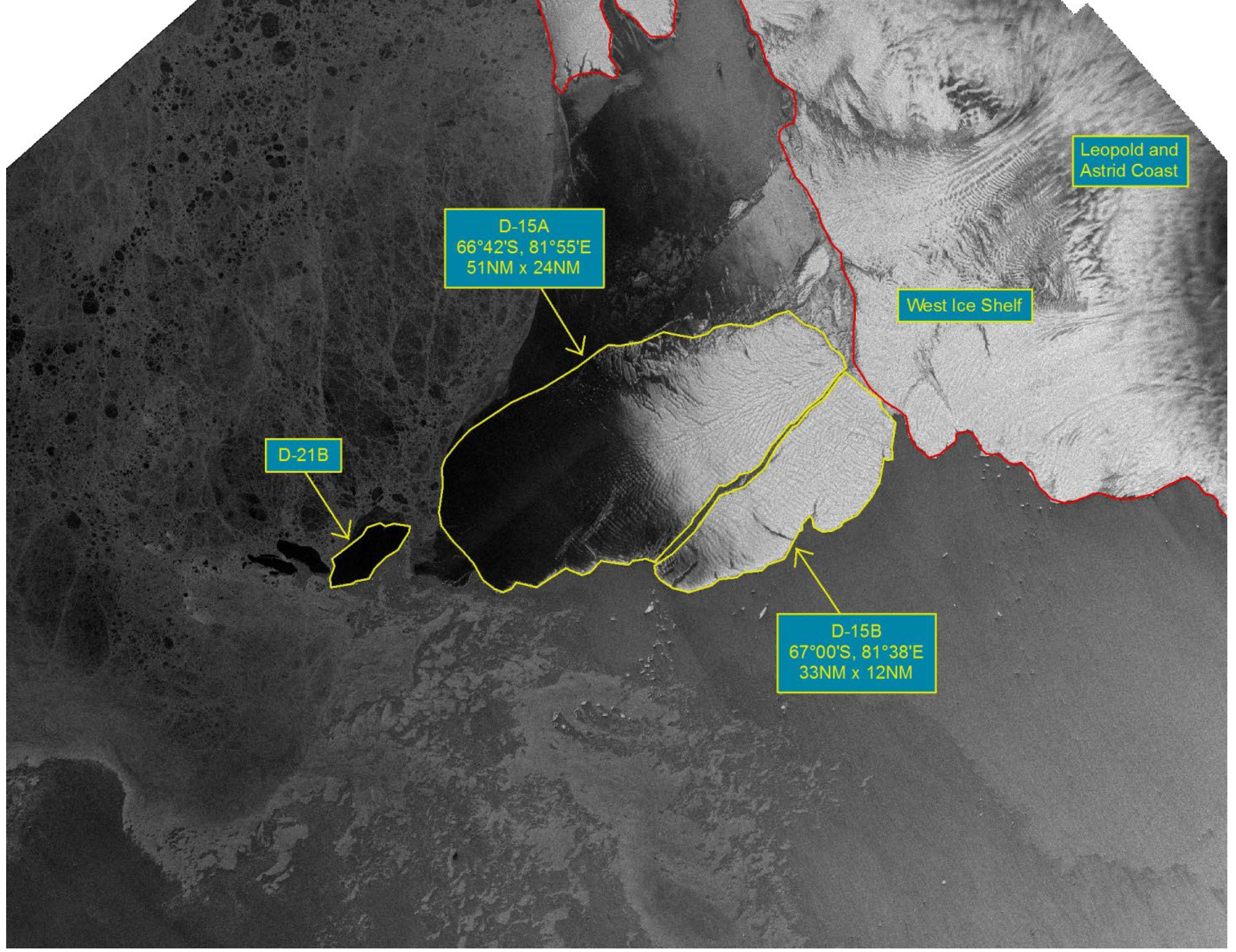Iceberg D-15AB Calves into the Amery Sea
By MST1 Matthew Tyson
U.S. National Ice Center
January 27, 2016
Suitland, MD — The U.S. National Ice Center (USNIC) confirmed the iceberg D15 broke into two pieces. Both the larger remainder, named D15A, and the smaller piece, named D15B, meet the size criteria for naming and tracking by the NIC.
D15A measures 51 nautical miles on its longest axis and 24 nautical miles wide and is located at 66°42’ South, 81°55’ East in the Amery Sea. D15B measures 33 nautical miles on its longest axis and 12 nautical miles wide and is located at 67°00’ South, 81°38’ East in the Amery Sea. Before breaking, D15 was the largest current iceberg in the world and had remained grounded in the same location for many years. D15A has now been demoted to the second largest iceberg, while D15B ranks in as fourth largest.
Analyst MST1 Matthew Tyson confirmed the new iceberg using Sentinel-1 image shown below.
The criteria for icebergs in the Southern Hemisphere for the NIC to begin tracking is that the iceberg must either be at least 10NM along any axis or the iceberg must have an area of twenty square nautical miles or greater.
Iceberg names are derived from the Antarctic quadrant in which they were originally sighted. The quadrants are divided counter-clockwise in the following manner:
A = 0-90W (Bellingshausen/Weddell Sea)
B = 90W-180 (Amundsen/Eastern Ross Sea)
C = 180-90E (Western Ross Sea/Wilkesland)
D = 90E-0 (Amery/Eastern Weddell Sea)
When first sighted, an iceberg’s point of origin is documented by the USNIC. The letter of the quadrant, along with a sequential number, is assigned to the iceberg. For example, C-19 is sequentially the 19th iceberg tracked by the USNIC in Antarctica between 180-90E (Quadrant C). Icebergs with letter suffixes have calved from already named icebergs, where the letters are added in sequential order. For example, C-19D, is the 4th iceberg to calve off the original C-19 iceberg.
The National Ice Center is a tri-agency operational center represented by the United States Navy (Department of Defense), the National Oceanic and Atmospheric Administration (Department of Commerce), and the United States Coast Guard (Department of Homeland Security). The National Ice Center mission is to provide the highest quality strategic and tactical ice services tailored to meet the operational requirements of U.S. national interests and to provide specialized meteorological and oceanographic services to United States government agencies.

For more information, please contact:
National Ice Center
Command Duty Officer
Voice: (301) 943-6977
E-mail: nic.cdo@noaa.gov
Twitter: @usnatice
Facebook: @usnatice
The U.S. National Ice Center is a tri-agency center operated by the Navy, NOAA, and Coast Guard and provides global to tactical scale ice and snow products, ice forecasting, and related environmental intelligence services for the United States government.